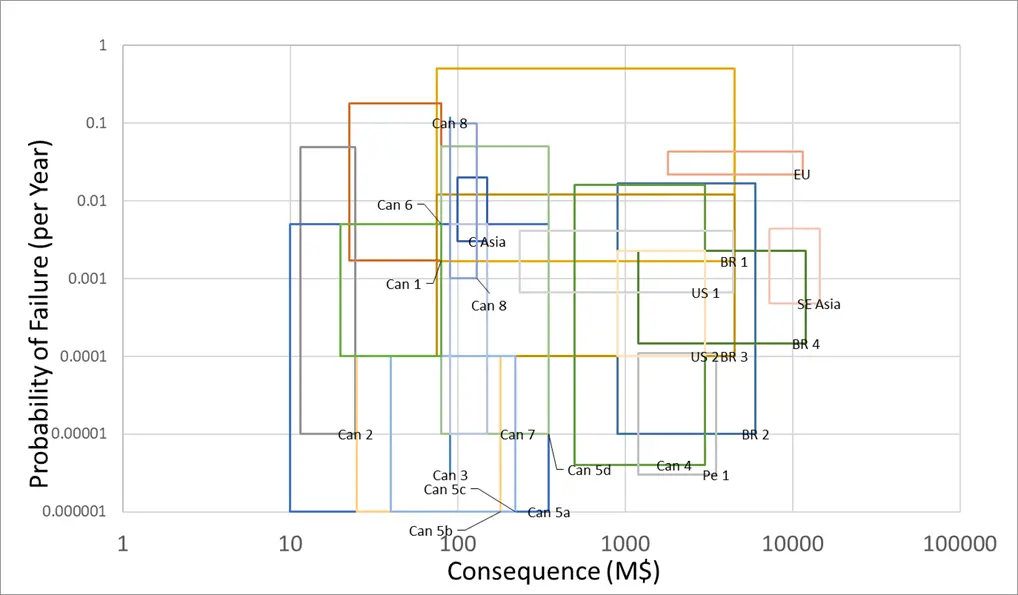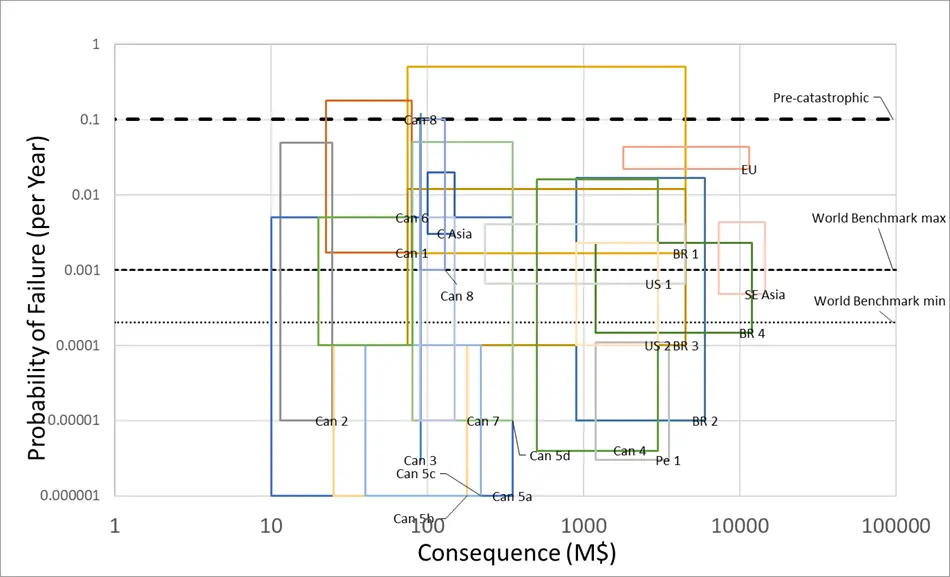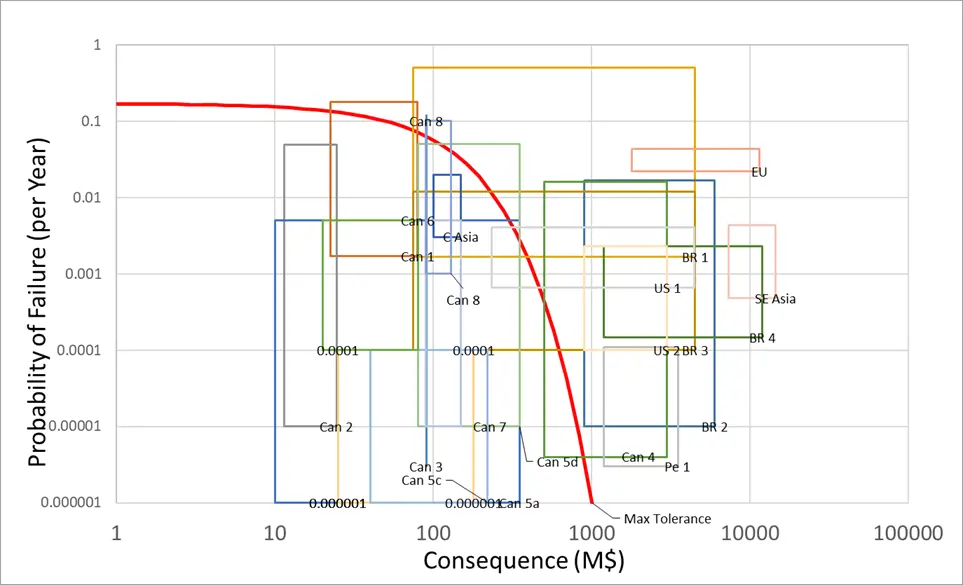Riskope’s worldwide ORE2_Tailings™ quantitative risk assessment experience can be summarized in one single graph that we will show below.
ORE2_Tailings is a subset of ORE (Optimum Risk Estimates) which is a “universal” platform for quantitative risk assessments and enterprise risk management we deploy for mining (i.e. tailings, open pits), transportation, forestry and suppliers.
We have deployed ORE for hundreds of operations worldwide. Today we will focus on tailings storage facilities.
Sample Portfolio for ORE2_Tailings Performance Summary
We selected a sample portfolio encompassing 21 sites, with variable number of dams (between 1 and 9). They are in North and South America, Central and Southeast Asia and in Europe. The sites are anonymized; their names have been replaced by a shorthand for the country or continent followed by a number.
The dams are built following upstream, downstream, or centerline types of cross-sections. The stored tailings are the result of base and precious metals extraction. The dams may be active, inactive or closed.
In some cases, ORE2_Tailings was used to develop projections including raises, alterations and climate change effects. ORE2_Tailings is also being used to demonstrate As Low as Reasonably Practicable (ALARP) mitigation in compliance with the Global Industry Standard for Tailings Management (GISTM).
We aggregate each site’s dams by considering the extreme min-max scenarios for probability and consequences. This allows a “rectangle perimeter” display of the risks of the dams present at the site.
Often, risks have significant inverse correlation between consequences and probability. As a result, small consequences have high probabilities and larger consequences have smaller probabilities of a given hazard. A good example of this is the probability of car accidents: a minor fender-bender is way more likely than full loss of the vehicle. However, in the case of tailings, one can assume that probability of catastrophic failure and their consequences are rather uncorrelated, at least at the standard level of analysis that data allow. Indeed, the consequences of a catastrophic failure are not dependent on the probability of the failure, but rather on the population density downstream, topography, etc.
Worldwide ORE2_Tailings Quantitative Risk Assessment Experience
Below is the “raw” risk landscape we generated based on our ORE2_Tailings deployment experience. As one can see, it delivers general information on ranges, but does not allow for any risk-informed decision-making yet. We need to add information to increase its value.




